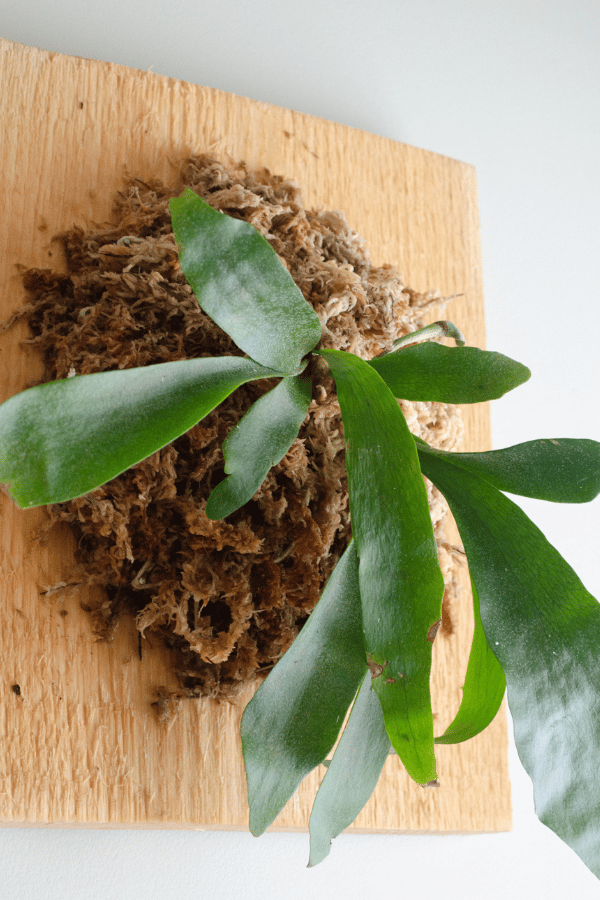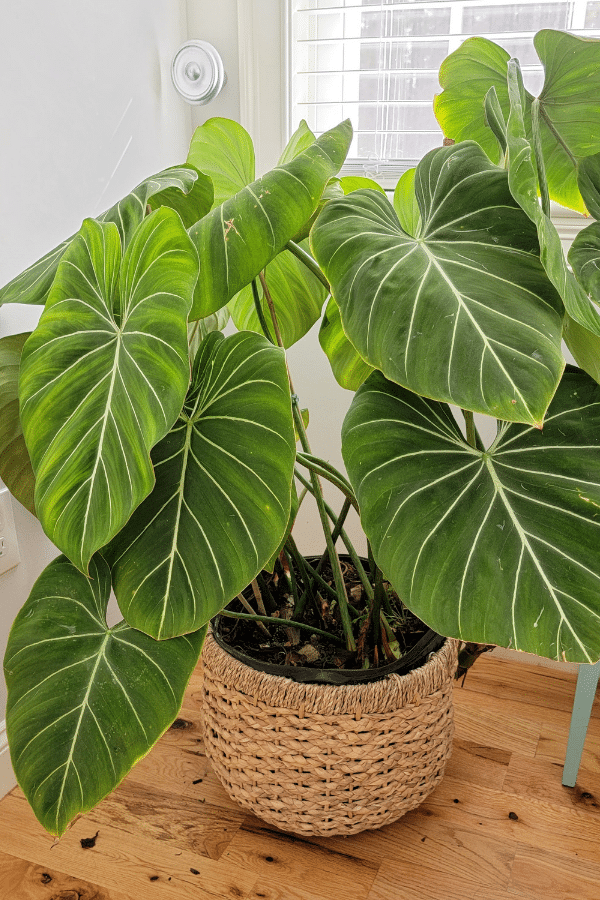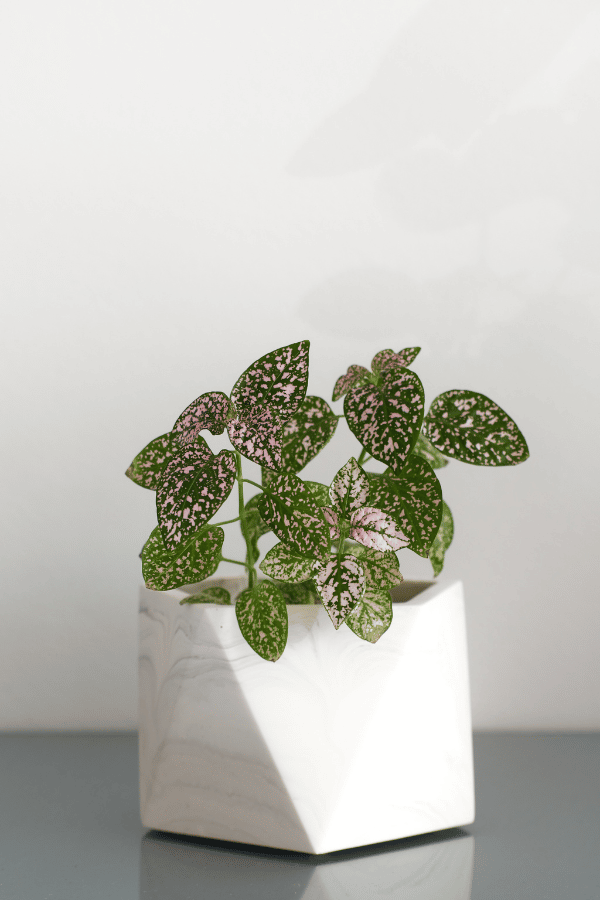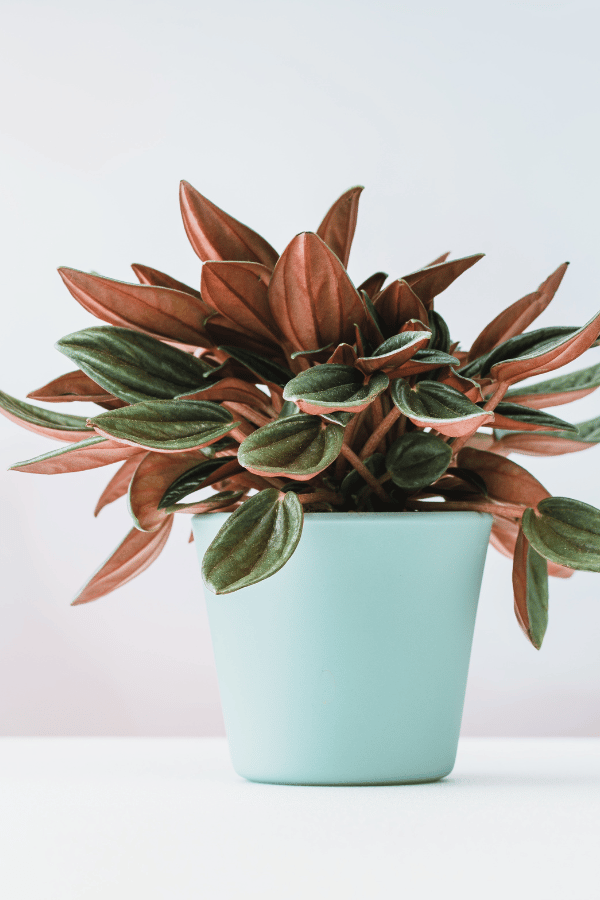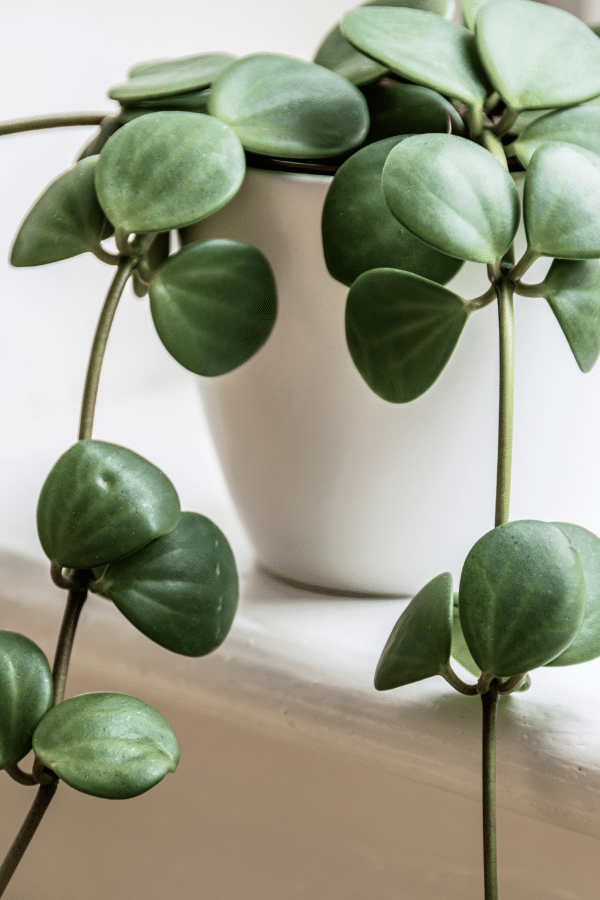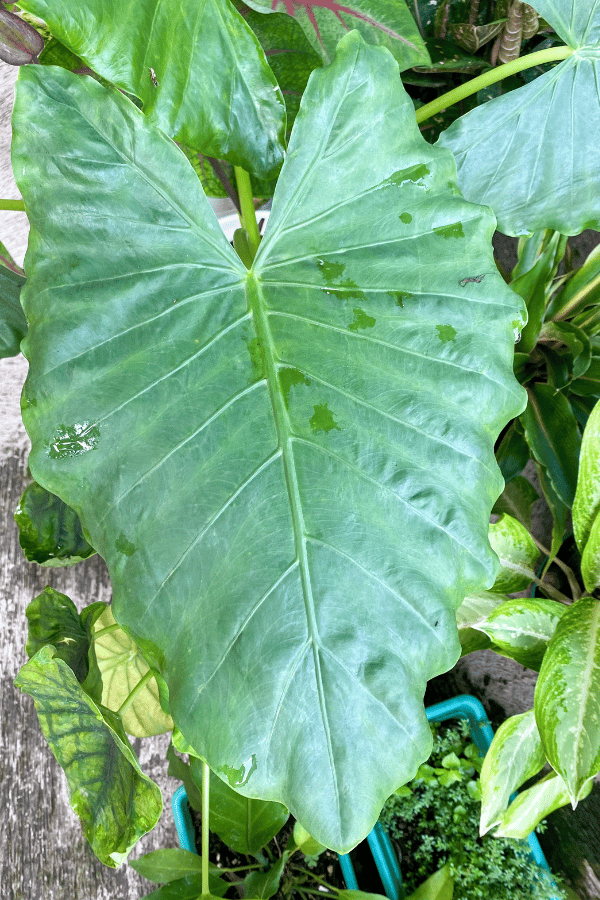Ficus Audrey
Scientific Name: Ficus Benghalensis
Common Name: Ficus Audrey, Banyan Tree, Bengal Fig, East Indian Fig, Strangler Fig, Indian Banyan
Ficus Audrey care is a relatively easy houseplant to care for. Cousin to the Fiddle Leaf Fig, the Banyan tree has become increasingly popular and found in many homes for a few years now. Although it can be hard to find in stores and nurseries, ordering a Ficus Audrey online is definitely possible.
Quick Care Overview
| Common Name | Ficus Audrey, Strangler Fig, Bengal Fig, Banyan Tree, Indian Banyan, East Indian Fig |
| Scientific Name | Ficus Benghalensis |
| Family | Moraceae |
| Origin | India, Pakistan |
| Identification | Oval leaves with bright green foliage and cream to white veins |
| Height | 6 feet tall |
| Soil | Potting soil with added perlite or bark mix |
| Water | Allow top two inches of soil to dry out before watering |
| Temperature | 60-85F |
| Sunlight | Bright, indirect sunlight |
| Toxic to Cats & Dogs | Yes |
| Toxic to Humans | Yes |
| Pests | Soil gnats, spider mites |
| Diseases | Fisarium wilt and root rot |
Below we will dive deep into how to care for Ficus Audrey.
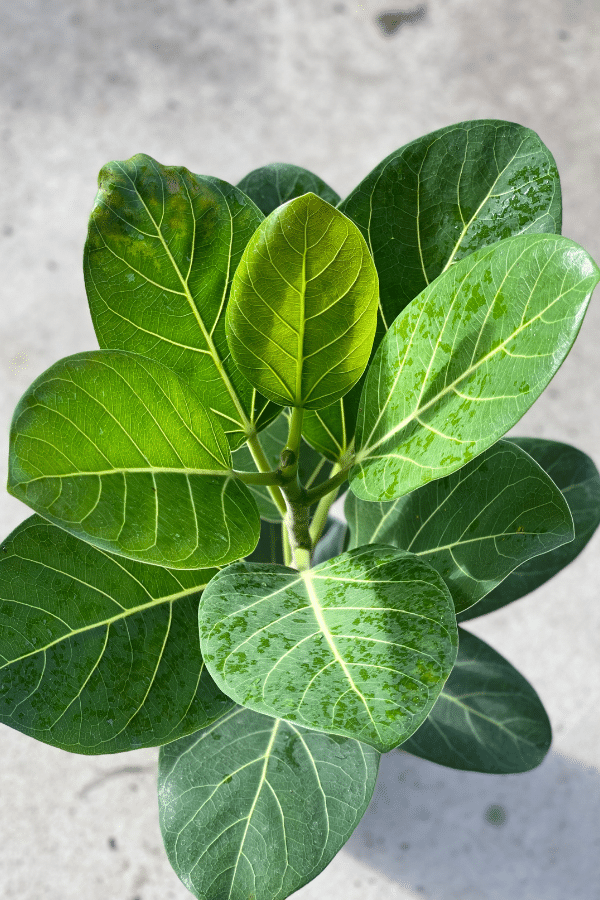
Ficus Audrey History
Ficus Benghalensis, also known as Ficus Audrey, strangler fig, Bengal fig, East Indian fig, and the banyan tree is a unique, ornamental tree that has famously become the national tree of India, where it is held as a sacred plant and where it originally comes from. It is becoming increasingly difficult to find these plants in local garden centers and nurseries due to their growing popularity.
Ficus Audrey Identification
Ficus Audrey is an oval-leafed plant with bright green foliage containing creamy, light green to white veins. It is a woody plant with a distinct, attractive pale trunk and lush foliage.
Ficus Audrey Growth Facts
With sizes ranging from a small bonsai to a large shade tree, Ficus Audrey is an impressive, iconic tree no matter the size.
How Big Does a Ficus Audrey Get?
When grown indoors as a houseplant, this tree can grow upwards of 6’ tall. It’s diameter usually extends to around 3’.

Ficus Audrey Care
Ficus Benghalensis care is stunning and a great choice for those looking for a tolerant, dramatic indoor tropical plant.
Best Soil for Ficus Audrey
Ficus Benghalensis is not picky when it comes to soil. Any quality standard potting soil should do fine for growing these plants as long as the soil has ample drainage and aeration. Drainage may be improved by incorporating perlite and/or bark mix into the potting mixture you select. Ficus Audrey prefers soil that is slightly alkaline but will tolerate the higher acidity of standard potting mix. If you need to buy a potting mix, look for one that is slightly alkaline.
Ficus Audrey Fertilizer
Ficus Audrey will enjoy regular, light fertilizing during the growing season in warm-weather months. A light liquid fertilizer that is high in nitrogen is preferred to improve root and leaf production within the plant. Do not fertilize in winter during dormancy for the best ficus Audrey care.
Ficus Audrey Watering
The Ficus Audrey prefers to have slightly moist soil, but like with many other indoor houseplants, be careful to avoid overwatering. Allow the top 1-2 inches of soil to dry completely before rewatering. The leaves of Ficus Benghalensis also give us indicators as to when the plant needs a drink. The leaves will tend to curl inward when thirsty and will droop when there is an excess of moisture.
Ficus Audrey Light Requirements
Ficus Audrey prefers bright indirect light. However, giving too much direct sunlight can scorch the leaves. A southern-facing window will suit Ficus Benghalensis quite nicely. If the plant’s colors begin to fade and the leaves start to wilt, you will know that the plant requires more sunlight.
Ficus Audrey Temperature & Humidity
Ficus Audrey will appreciate being kept in a normal, room-temperature environment, between 60 and 85 degrees Fahrenheit. Temperatures below 55 degrees Fahrenheit will result in leaf dropping. Humidity levels should be kept between 30 to 60 percent. If the air lacks sufficient humidity, Ficus Audrey will often lose leaves. This can be remedied by adding a pebble tray or a humidifier near the tree. Keep the Ficus away from drafts, air conditioners, and heaters.
Repotting Ficus Audrey
Ficus Benghalensis does not require repotting frequently. Every two years is a good rule of thumb for repotting Ficus Audrey in a larger pot. When roots become visible through drainage holes, it has become root bound, and you may repot your Ficus right away. Select a container that is only slightly larger to prevent root shock. Spring or early summer is the best time for repotting indoor plants.
Ficus Audrey Maintenance & Pruning
To maintain size and shape, trim the Ficus during winter dormancy. There is a higher rate of injury if pruned during the months where the plant is actively growing, so pruning in winter is best with Ficuses. Using sharp, clean shears, cut off the top of the plant which encourages branching, giving it a bushy appearance. You will want to wipe the dust off the leaves of this plant every so often so the plant can absorb all of the sunlight and nutrients it needs.

Propagating Ficus Audrey
Propagating of Ficus Benghalensis is easy and may be done by stem-tip cutting. Propagate during active growing months. To take a cutting, take clean, sharp shears and select a branch that is at least eight inches long with several leaves. Remove the branch by cutting at a 45-degree angle beneath the leaf node. Place this cutting in jar filled with clean water, ensuring that no leaves are submerged but the stem cuttings is touching the water. Rooting hormone may be used, but is not necessary. Place it in a low-lit indirect sunlight spot. In several weeks, the roots will have appeared and will have grown to be a couple of inches long. Transfer to a well-drained potting mix for establishment. Be aware that the sap excretions can cause allergic reactions if it comes in contact with your skin. Wearing gloves when you are propagating ficus Audrey is suggested.
Ficus Audrey Toxicity
Ficuses leak a milky white sap from their stems. This sap, and therefore, Ficus Audrey is toxic if ingested and can cause skin irritation. Exercise caution when handling this plant and keep it away from children and household pets.
Toxicity to Humans
Like most plants in the Ficus family, Ficus Benghalensis is considered toxic to humans and should never be ingested. The sap can cause allergic reactions when coming into contact with the skin. Utilize caution when handling the plant. Wear gloves and always wash hands after touching the plant.
Toxicity to Cats & Dogs
Ficus Audrey is very toxic to pets. Ingestion may induce indigestion, vomiting, oral irritation, and other complications. If you suspect that your pet has ingested the plant, contact your veterinarian or call animal poison control.
Ficus Audrey Problems
Ficus Audrey Leaves Turning Yellow
Yellow leaves is a common indicator that you are overwatering your Ficus. Ensure that your plant is not sitting in water and that the Ficus has adequate drainage holes in the pot and is planted in a well-draining soil mix.
Ficus Audrey Leaves Turning Brown
Leaves of Ficus Audrey will turn brown when the plant is not getting enough water or when the humidity level is too low. Additionally, a location that is too close to a heat source may cause brown edges. Brown leaves could also be an indicator of bacterial or fungal infection. Be sure the plant is getting enough water and moisture and lives in a spot where it can grow to its fullest potential.
Ficus Audrey Diseases
Ficus Audrey is known to suffer from fusarium wilt and root rot. These diseases can be treated with a fungicide.
Ficus Audrey Pests
The most common pests to affect Ficus Audrey are soil gnats and spider mites. A key to the prevention of pests is to not overwater the plant. If the plant is holding too much moisture, it becomes a breeding ground for pests. Using neem oil on affected areas of the ficus plant is a good way to get rid of these pests.

